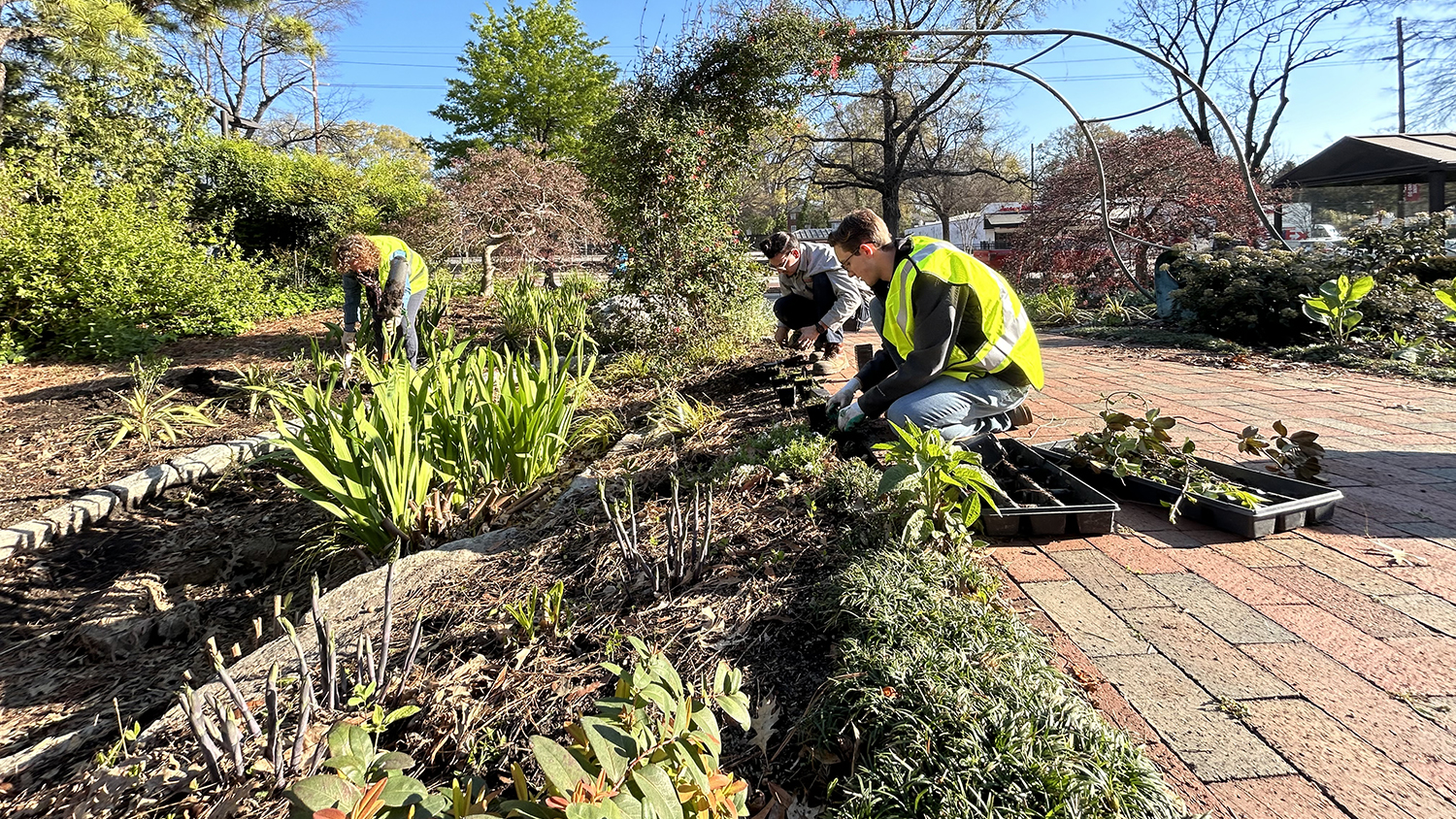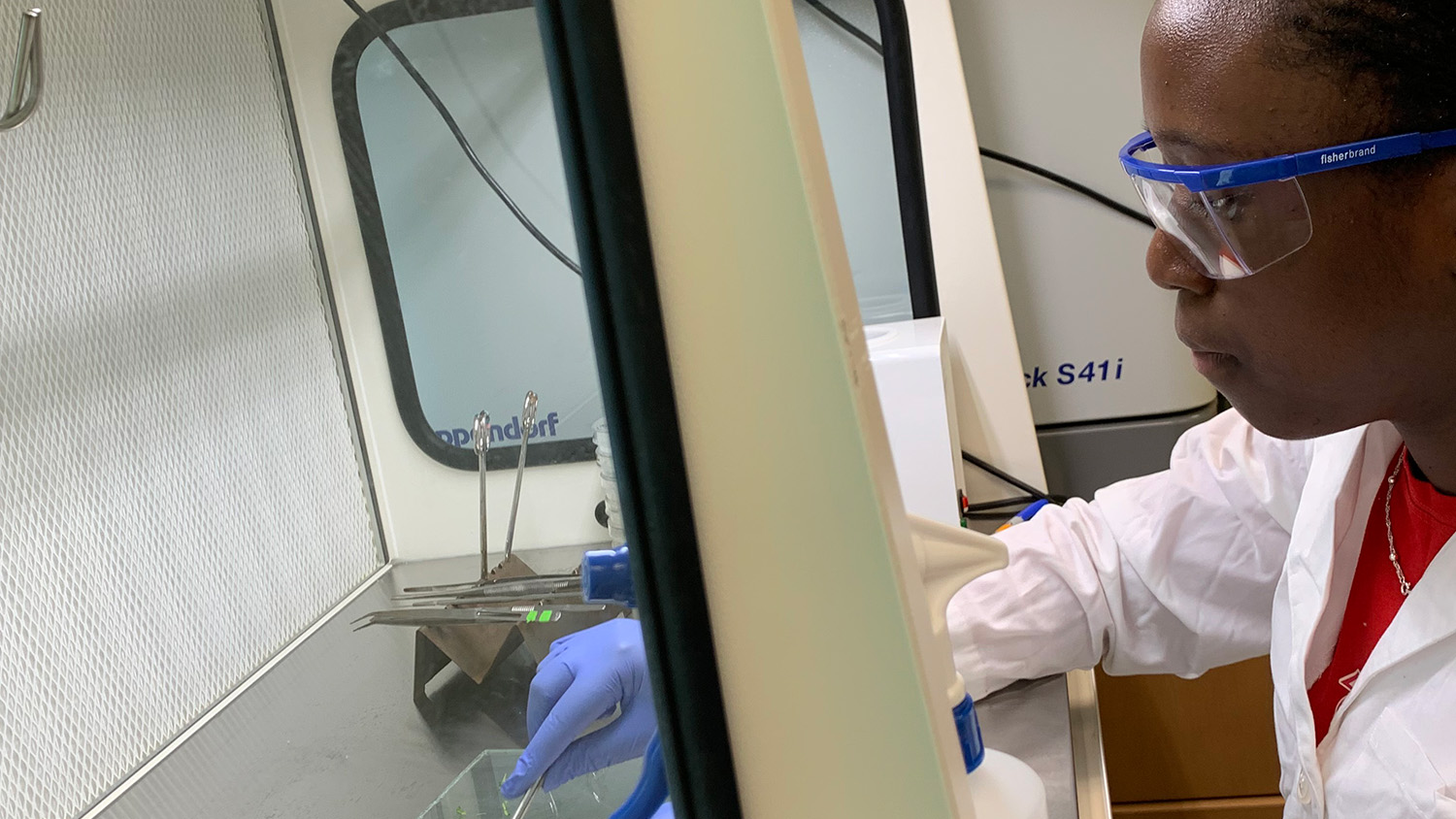Grad student designs landscapes with both human and environmental health in mind
Can landscape design accommodate both the needs of a growing population and an endangered environment? Can you take a business-and-residence mash-up and transform it into an environmentally healthy, pedestrian-friendly, urban oasis blending open space and neighborhood-serving businesses?
That’s what Brantley Snipes sought to find out in her project “Retrofitting Suburbia with Health in Mind,” research that she presented at N.C. State University’s 2011 Graduate Student Research Symposium in March. Snipes, a native of Greenville, Miss., conducted the project as part of her graduate studies in pursuit of the master’s degree in landscape architecture she earned in May. She is also on schedule to receive her master’s in horticultural science from the College of Agriculture and Life Sciences in August.
Both disciplines were interwoven in her symposium project. Essentially she selected one of Raleigh’s inner ring suburbs (areas built between 1945 and 1980), specifically the Blue Ridge Road/Western Boulevard vicinity that includes businesses such as Kmart, as well as single-family dwellings and apartment complexes and related environs. (The area is also not too far from N.C. State’s JC Raulston Arboretum.) For this locale, she designed a suburban retrofit “to promote both human and environmental growth along the Blue Ridge corridor,” she said.
“The overall location was chosen by my adviser Kofi Boone as an area that was representative of what we were studying in our studio: Inner ring suburbs, areas of transition for Raleigh’s future, where population growth is expected to significantly increase by 2030,” Snipes said.
What initially caught her attention in this area, she said, “was the massive, underutilized Kmart parking lot. Upon further research and analysis of the surrounding area, I found problems with the watershed of the area, the vegetative conditions and the altered topography.
“The area is fragmented [among] business, homes and attractions, with little or no connectivity between them, and residents of the area depend solely on automobile transportation,” she said, noting that these conditions can be suburban health crisis contributors.
As she states in her research poster, “there is a lack of diversity in overall plant material, which is divided into fragmented patches of non-native vegetation, limiting native habitats. This discourages the creation of view sheds into the natural environment from existing buildings, hindering mental health. Large amounts of impervious surfaces create large volumes of storm-water runoff, polluting and degrading the watershed.
“Consequently, the large ‘islands of concrete’ created by separate building development force automobile use.”
Snipes explained that “contemporary needs include simple access to goods and services of your daily life, which today can include your place of work, groceries, medical care, etc. The problem lies in the fact that many of the residents depend solely on automobiles to carry them from each of these places. What happens if they become too old to drive or cannot afford a vehicle? Access to needs is then lost; therefore we can design where access to contemporary goods and services is part of a neighborhood fabric.”
Her plan was to tackle the “amazing disconnect between the residential and business areas,” by proceeding from an “environmental focus” — an approach inspired by an ecological design theory of Harvard landscape ecology professor Richard Forman. In the case of the BlueRidge/Western Boulevard area, she found that environmental preservation could allow for dense, mixed-use developments “that promote walkability and other outdoor activities that provide mental and physical health attributes to the community.”
After designating two main landscape corridors in the area, Snipes said, “The first step of design was to examine ways to improve the width and connectivity of these corridors before determining where development could occur. Increased width of and connectivity of vegetative corridors encourages ecological systems to perform at their highest capacity.”
This connectivity, she said, is achieved by re-implementing native plant species in large areas of land, instead of small individual lots. As for the stream corridors, she said, “Restoring the stream channel by increasing the width of the stream buffers and day-lighting pipe channels allows the watershed to perform natural functions of pollutant removal and water movement.”
And once the corridors are restored, she said, they allow for new public realm development in several areas.
As the poster renderings of the projected results show, the new “land pattern is now oriented to support pedestrian movement, high density and mixed-use developments. The pattern can now support multiple markets and maximize existing structures,” she said. “Site infrastructure is now a complete network of not only roads, but bike lanes, sidewalks and greenways. Site zoning is now based on individual, mixed-use basis allowing for large amounts of public open space for recreation.”
Moreover, all projected routes are connected to a light rail station. And access to daily needs and services is now found within a walkable radius.
Snipes said her composite image displays “good environmental health, physical health and social health through the introduced ecological systems, transit systems and mixed-use/high-density development. It’s a redesigned public space that allows for easy access to recreation, shopping, work and healthcare.”
It sounds quite Utopian, yet Snipes believes such a transformation is certainly within the realm of possibility, albeit probably an expensive one.
“The greatest part of being in school is that we get to dream big and don’t really have to be brought into reality with costs and logistics of plan of this scale. I would anticipate that the cost would be the greatest drawback. A project of this scale would take years, maybe even decades to be phased into fruition,” she said.
“I’m still in school, so my most of my work is still quite theoretical. I strive to bring a level of practicality to my work so that the ideas I propose in my designs are not totally implausible.”
What she has done is create a model for future planning. “One goal of this project was to create a standard metric that can be applied to other sites that are facing a health/environmental crisis,” she said.
“I believe that as landscape architects and landscape designers, it is part of our duty to not settle, but to challenge the status quo of our current trends and standards of development in order to protect the health and viability of future generations of our planet.”
It was a love of outdoor environments and a love of people that brought her to this choice. And of course genetics: “My mom is an art teacher and my dad is a plant physiologist,” said Snipes, whose future plans are still somewhat on the drawing board.
“I would love to be part of a firm for several years and then pursue a career as a professor of Landscape Design/Architecture” she said, “but am still quite open to the various opportunities this field provides.” – Terri Leith
- Categories:


